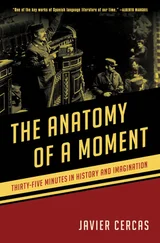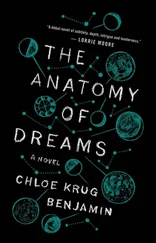I had almost made it to the laundry machine when Gabe came upstairs, a mug of coffee in each hand. He glanced at me with surprise.
“We washed the sheets last week,” he said.
I had bundled them in my arms, but the red was too loud to hide. I could see his eyes find the bright spot.
“I bled,” I said, edging past, leaving him alone at the top of the stairs.
Like a plane blinking in the night, my progress away from Gabe was steady. Perhaps if I had told the truth that morning, I could have changed the course of that dark machine, wrenched it around by the wings. But blood had already become less threatening than paint, reality the fair sister of illusion; and so, pouring bleach into the mouth of the washing machine, I continued.
13. FORT BRAGG, CALIFORNIA, 2002
When August came in Snake Hollow, we began to prepare for our departure to Fort Bragg. After leaving Mills, Keller had settled in this small coastal city, a Civil War military garrison about two and a half hours south of Eureka. In the summer, tourists came to visit the remains of the fort and walk Mendocino’s rocky, glass-strewn beaches. The entire city smelled like salt water. It was quiet enough for Keller to afford an abandoned redbrick storefront at the edge of town, which he converted into a small laboratory and research center. Many of our patients drove from other parts of California—Fort Bragg is three hours from San Francisco by car—but those who flew in were offered lodging in a studio apartment above the lab, which Keller had renovated to accommodate overnight sleep studies.
It may have been picturesque, but it was an odd place to plop a research facility. Martha’s Vineyard was no academic stronghold, but Fort Bragg was practically barren in that respect. It was fortressed by the toothy cliffs of Mendocino County, and its main industries were logging and construction. The closest universities were two hours north and south. But Keller did nothing unintentionally; he was as fearful as he was crafty, and I began to suspect that Fort Bragg’s isolation was part of its appeal. After five years at Mills, after leaving higher education entirely, he chose to build himself up again in relative secret.
Keller’s house was small and shingled, several blocks away from the lab. When he was being self-deprecating, he called it his cottage, but it was clear he took pride in it: he’d refinished the wood floors, installed new windows, and painted the exterior himself—robin’s egg blue with white trim. Gabe offered to share his basement apartment with me—he could sleep on the fold-out couch in the living room, he said, chivalrously offering me the bedroom—and I agreed. The distance between us filled me with a pained, nostalgic longing for the way we used to be, but I still thought I’d be happier living with Gabe than being on my own. Besides, his place was fully furnished, so there was nothing I had to bring or buy.
We lived a block away from Keller. That fall, we spent most of our dinners at his place. We made many of the same meals we had in Snake Hollow, but the frenzied electricity of the summer was soon replaced by a lower frequency, a worker-bee’s hum. Though our small group hadn’t shrunk in size, I experienced small moments of loneliness. They came like chills as we sat at Keller’s round table with the windows open: rain tapping the sidewalk, the sky a lunar indigo. We ate in new silence, interrupted only by the clink of a knife on the butter dish or the dull ring of a water glass set down. There were only so many things for us to talk about, given how often we saw each other. Still, I was reminded of dinners with my family in New Jersey, when we’d exhausted the usual topics and the day’s fatigue set in—how disappointing it was to discover that even my closest relationships were not immune to distance.
Sometimes, though, our patter was as quick and engaged as it had been that summer. In early September, Keller briefed us on the case we would begin midmonth. We cleared the round table of place settings, replacing them with a corked bottle of wine and a stack of files. I was excited: it was the first time I would see an actual patient, take part in a real experiment.
Keller pushed his glasses up on his nose and opened the manila file in front of him.
“She’s younger than I usually see for RBD,” he said. “But she shows all of the signs.”
We looked at the photograph on the top. It showed a woman with light blond hair pulled into a slick bun and pale, powdered skin; she looked like the sort of person who never left the house without sunscreen, even in winter. There were two bluish half-moons beneath her eyes, shadows of fatigue that she had tried to disguise with yellow foundation. Keller publicized his research through various channels, including state universities throughout California, and this woman had seen an ad for his study on the bulletin board of the nursing building at Humboldt State. Her name was Anne March, and she was twenty-four years old. In our research, she would be called patient 222.
Two weeks later, I met Anne for the first time at the lab. She hesitated before speaking, and when she did, her voice was halting; she could barely finish a sentence without encouragement. Because this was my first study, Keller asked me to observe her interview without interfering. He told Anne that I was a new trainee, a student, but her eyes still flickered at me with distrust.
For six months she had been living with disturbing, daily nightmares—nightmares she described as having a hallucinogenic quality, which compelled her to get out of bed to protect herself. When she woke, she found herself standing in another part of the house—once in the shower with the water off, another time in front of the living room window, her hands against the glass. Her heart was always racing, and she was so drenched in sweat that she had to bathe or change clothes (she said this in a voice so quiet that Keller had to ask her to speak up). The dreams, she said, were horrific, but she could not remember their specifics, only the lingering sense of fear and revulsion that was present when she woke up. That, she said, was why she’d come to us—so she could figure out what she’d been dreaming and why.
She was also newly engaged. She and her fiancé shared an apartment, but now they slept alone. Three months before, Anne had been forcibly woken by her fiancé, who’d opened his eyes to find Anne’s hands around his neck. As a nursing student, Anne knew the importance of documented evidence. She brought him to the laundry room in her apartment complex, where the fluorescent lights were brightest, and took photos of the scratches along his neck, the crescent imprints made by her nails.
As she showed us the photos, copies of which we’d already seen in her file in Snake Hollow, Anne was not emotional. In fact, whenever I saw her awake, she was restrained—delicate, perhaps, but with an inscrutable comportment that veiled whatever was going on inside her like the mess of a teenager’s room shoved underneath the bed: a haphazard method, but one that did make the floors look temporarily clean.
Gabe told me this was normal. “Most of our patients seem entirely sane when they’re awake,” he said as we packed up one day after a lucidity training session. “They’re mild mannered, sort of embarrassed—and they’re a lot more pleasant than she is, to be honest.”
The night before, Anne had slept at the lab during her first lucidity study. She seemed on edge when she arrived, and her mood worsened as we prepared her. She complained that the lab was too cold and then, when we turned the heat up, too warm; she had forgotten her usual Colgate toothpaste and refused to use the Crest we had in the lab, so I drove to the closest twenty-four-hour pharmacy. Because I was new, Gabe took Anne’s vitals and set up the video camera while Keller readied the EEG. I scarfed my dinner in Keller’s office. Minutes later, Gabe burst through the door.
Читать дальше












